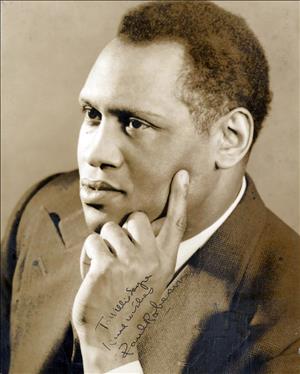In 1946, the National Negro Congress, the International Labor Defense, and the National Federation for Constitutional Liberties combine to form the Civil Rights Congress.
By 1952, the Seattle Civil Rights Congress had 350 members of whom 75 were African Americans.The organization supported black demands for social justice with boycotts, pickets, and demonstrations to mobilize public opinion.
The CRC brought Paul Robeson (1898-1976), the internationally renowned black singer, actor, and orator, to Seattle in 1952. After overcoming opposition from city officials because of his communist leanings, he was successfully presented in concert at the Civic Auditorium.
Among the six prominent leaders of the Civil Rights Congress was Paul Bowen (b. 1922), an African American labor leader and former congressional candidate on the Progressive Party ticket. The others were Terry Pettus, Bill Pennock, John Dasbach, Barbara Hartle, and Henry Huff.
Sources:
Quintard Taylor, The Forging of a Black Community; Seattle's Central District from 1870 through the Civil Rights Era (Seattle: University of Washington Press, 1994), 184, 185.
Licensing: This essay is licensed under a Creative Commons license that
encourages reproduction with attribution. Credit should be given to both
HistoryLink.org and to the author, and sources must be included with any
reproduction. Click the icon for more info. Please note that this
Creative Commons license applies to text only, and not to images. For
more information regarding individual photos or images, please contact
the source noted in the image credit.

Major Support for HistoryLink.org Provided
By:
The State of Washington | Patsy Bullitt Collins
| Paul G. Allen Family Foundation | Museum Of History & Industry
| 4Culture (King County Lodging Tax Revenue) | City of Seattle
| City of Bellevue | City of Tacoma | King County | The Peach
Foundation | Microsoft Corporation, Other Public and Private
Sponsors and Visitors Like You

